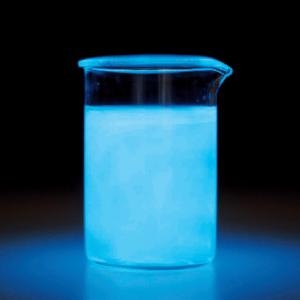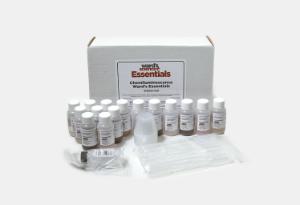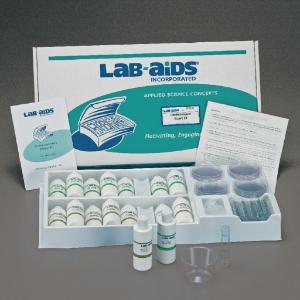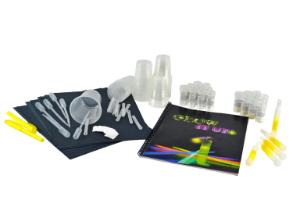Shed Light on Chemiluminescence with this Simple Activity
Middle/High School
Motivate your students to learn more about chemical reactions by helping them discover the science that links cool things like glow sticks, fireflies, jellyfish, and even crime scene investigations.
Chemiluminescence (CL) involves a chemical reaction that produces the fascinating light energy we observe in nature and the lab.
Researchers use chemiluminescent principles in a wide range of applications outside of the lab, including
- Pharmaceutical and Alumina industries
- Forensic medicine
- Clinical science
- High-Performance Liquid Chromatography (HPLC)
- Oncology and other areas of medicine
The basic science behind light
Light is created when electrons move between defined energy levels in an atom (shells). When something excites an atom, such as a collision with another atom or a chemical electron, an electron may absorb the energy, boosting it up to a higher-level shell. The boost is short-lived, so the electron immediately falls back down (relaxes) to the lower level, emitting its extra energy in the form of an electromagnetic energy packet called a photon (the basic unit that makes up all light). 1
In other words, if the cause of the excitation is because of
- photons striking atoms, the associated emission of light is called photoluminescence
- electrons, then the emission of light is referred to as electroluminescence
- a chemical reaction, the emission is called chemiluminescence.
Illuminating chemiluminescence
Chemiluminescence is the emission of light due to an excited electronic molecular state, as a result of a chemical reaction, returning to the ground state.2 Chemiluminescence in biological systems is called bioluminescence and is found in creatures like fireflies, bacteria, algae, jellyfish, worms, crustaceans, fish, and sharks, to name just a few.
Since this form of light is not directly related to heat, it is considered luminescence—in contrast to incandescence light resulting from heat.
Energy from this chemical reaction pushes electrons into a higher orbit. The excited state is less stable than the ground state. The electrons in the excited state fall to the ground state (lower energy) and emit light.3
Chemiluminescent reactions are behind the mesmerizing light from glow sticks, fireflies, jellyfish, and the cool blue light revealing the presence of blood at a crime scene—not so cool if you’re the perp!
Download the Glow in the Dark activity below to show students how the energy of a chemical reaction from a deionized water solution, sodium carbonate, sodium bicarbonate, luminol, ammonium carbonate monohydrate, copper sulfate 5-hydrate creates a chemiluminescent glow—with no increase in temperature.
1. How it works Daily - How do atoms emit light. 2. Science Direct, Flow Analysis with Spectrophotometric and Luminometric Detection, 2012. 3. Chemiluminescence - https://simple.wikipedia.org/wiki/Chemiluminescence
Recommended products
[StartProductBlock]

Ward's® Chemistry Chemiluminescence Demonstration
A visual explanation of an exothermic reaction. Kit includes hydrogen peroxide and luminol solution.
[EndProductBlock]
[StartProductBlock]

Ward's® Essentials Chemiluminescence Lab Kit
Students create "cool light" as the result of the oxidation of a chemiluminescent compound. Aligned to NGSS MS-PS1-2
[EndProductBlock]
[StartProductBlock]

Chemiluminescence Student Activity
Observe ratios of chemicals used and the effects of temperature on chemiluminescence. Demonstrates oxidation-reduction reactions.
[EndProductBlock]
[StartProductBlock]

American Chemical Society: Glow It Up Lab Activity
How does a glow stick work? Students alter the chemical reaction to attempt to change the duration and brightness of the reaction. Developed by the ACS through grants from the NSF and NIH
[EndProductBlock]
